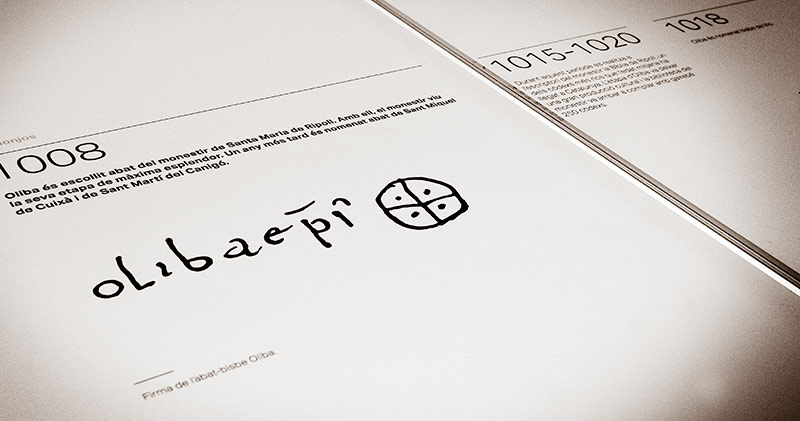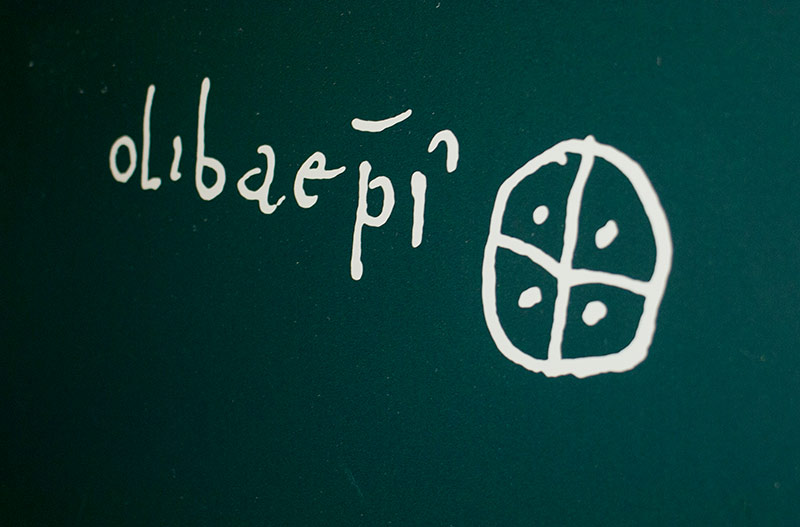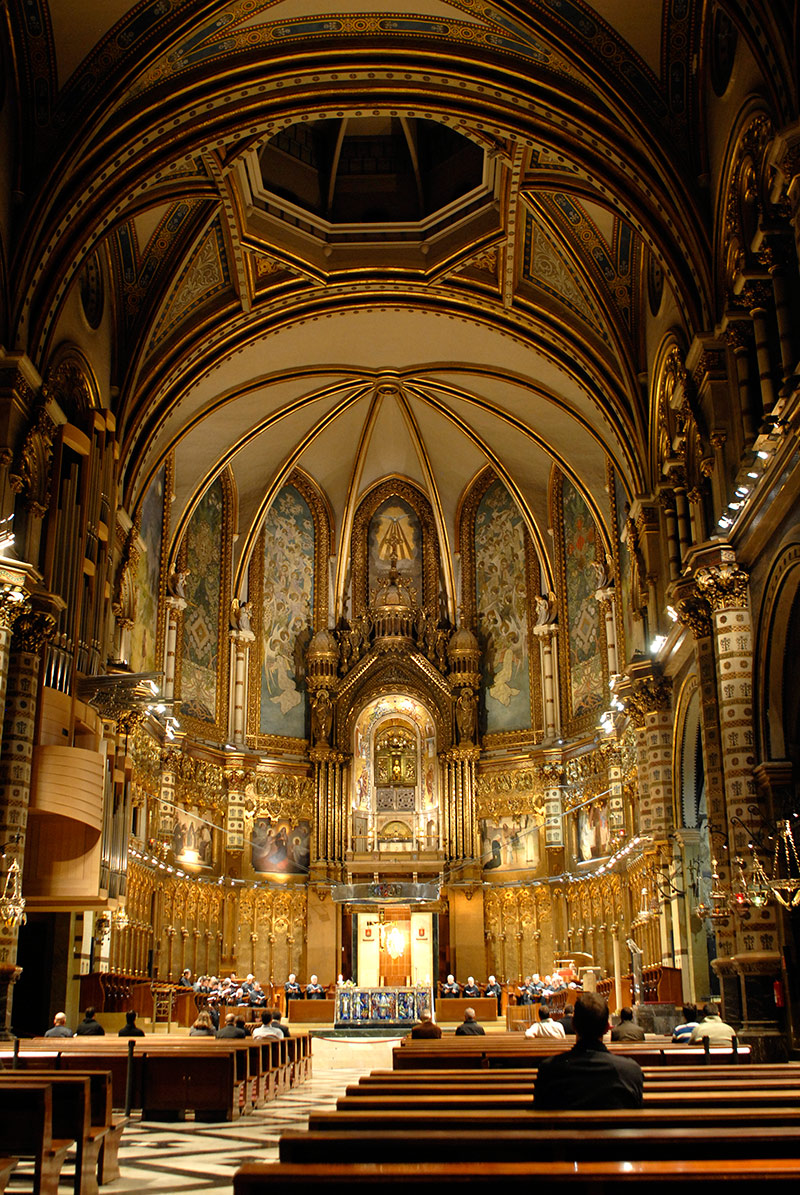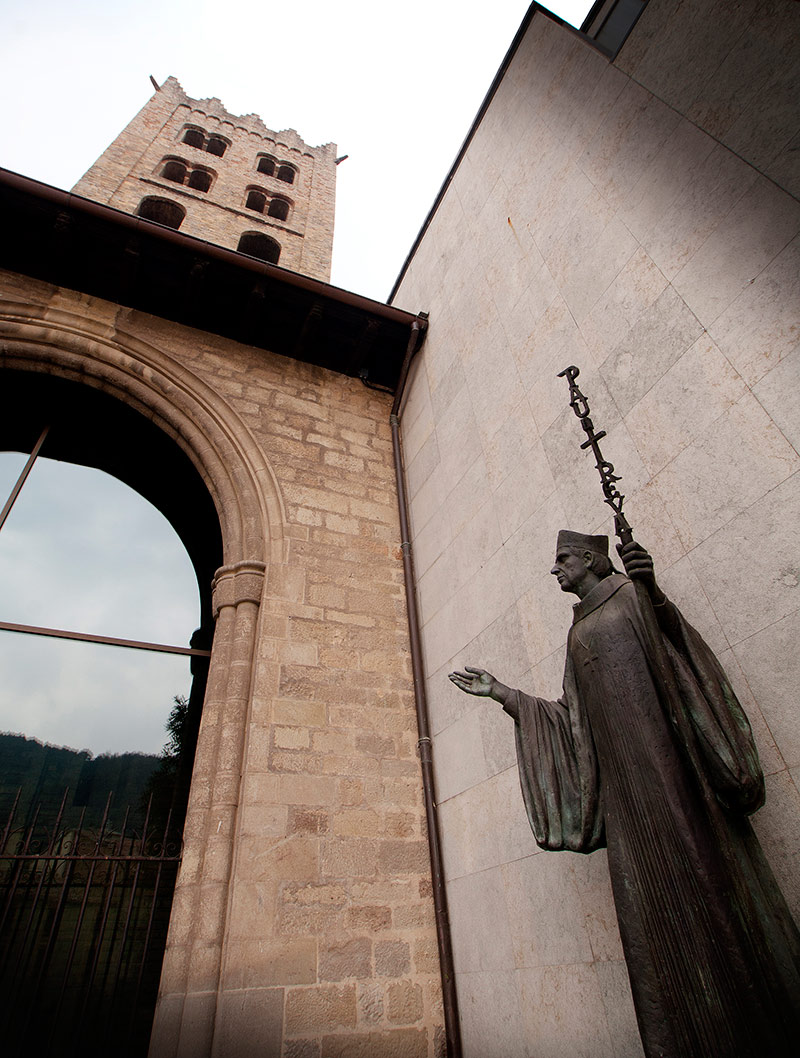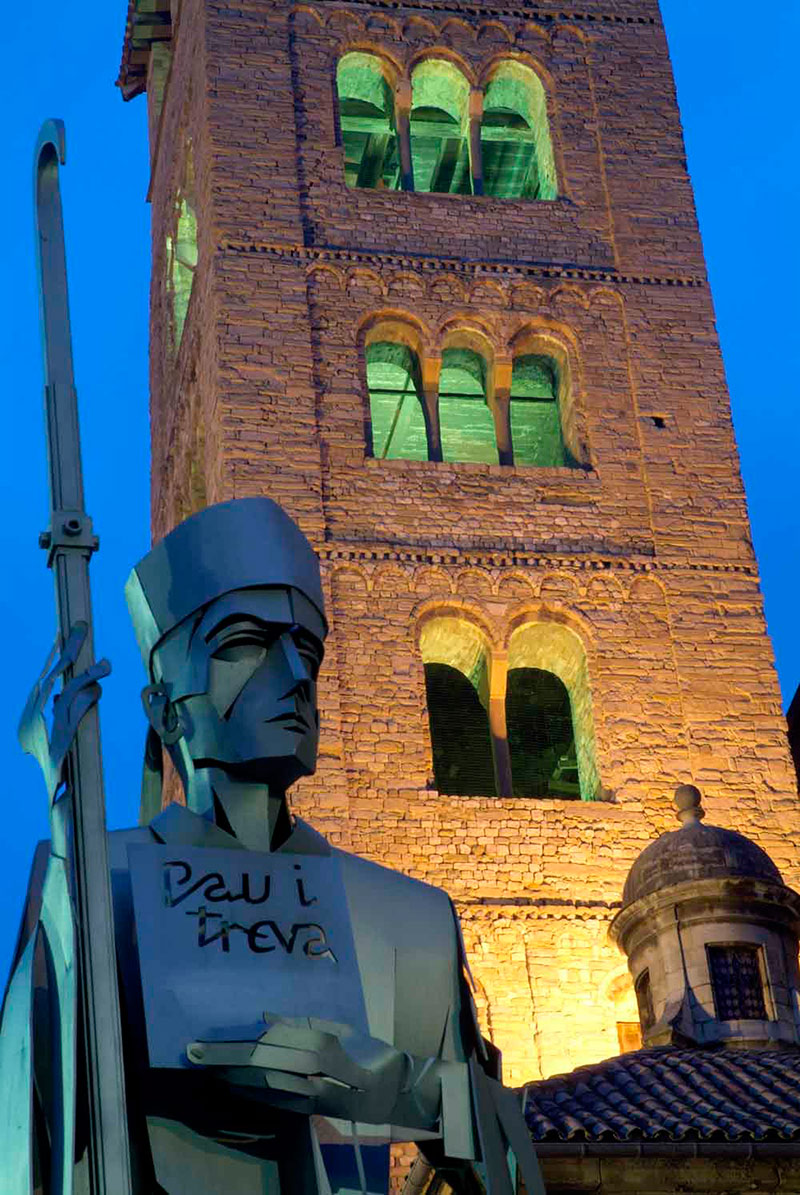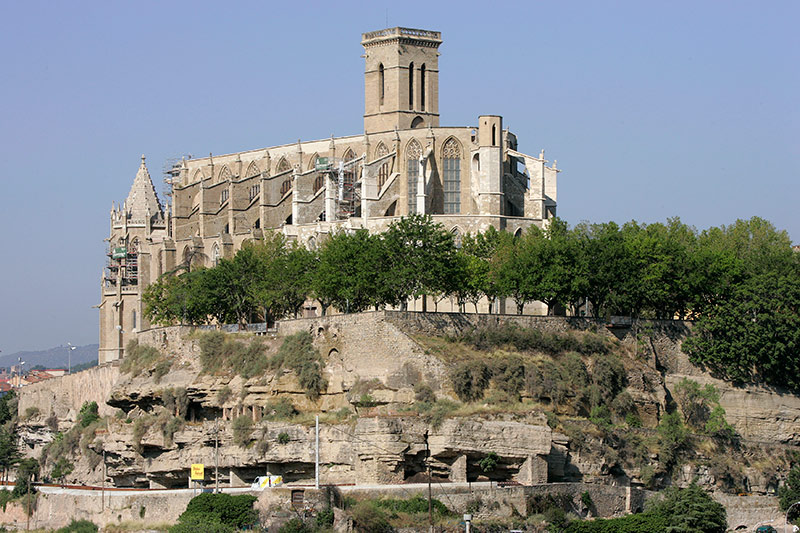The abbot Oliba (Besalú 971 – Sant Miquel de Cuixà, Conflent 1046), Benedictine abbot, bishop and count of Berga and Ripoll (998-1003). Third child of the Count Oliba Cabreta of Cerdanya and Besalú, born of his wife Ermengarda, and great grand child of the Count of Barcelona, Guifré el Pilós.
On the death of his father in 988 Oliba began to exercise together with his siblings and mother the functions of the count over all the family’s estate. Therefore, while his brother Bernat inherited Besalú, and Guifré inherited Cerdanya, Oliba received the estates of Berga and Ripoll.
In 1002 he renounced the rights as count and entered in to the monastery of Santa Maria in Ripoll. In 1008, between 29 July and 8 August, he was elected as the monastery’s abbot, and thus he became the seventh abbot of the monastery.
The same year, 1008, a few days before elected in Ripoll, he was chosen as abbot of the Monastery of Sant Miquel de Cuixà, an abbey under the patronage of his family, like that of Ripoll. Thus Oliba became the abbot of the two most important monasteries in Catalonia at that time.
Almost certainly on the wishes of the Countess Ermessenda de Carcassona, countess of Barcelona, Girona and Osona, in the year 1018 Oliba was appointed Bishop of Vic.

